#�� 、tokyus
Explore tagged Tumblr posts
Text

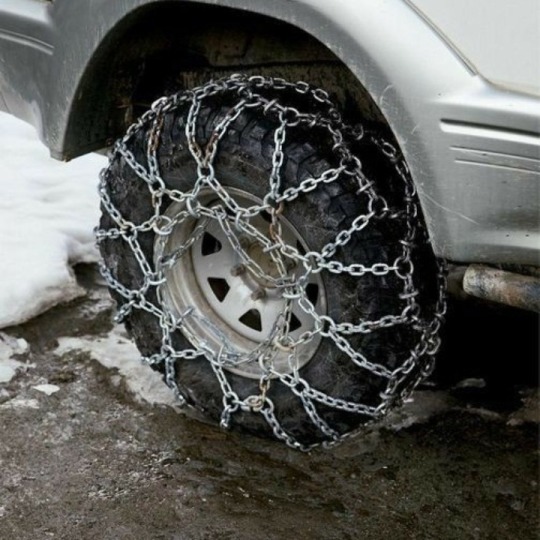



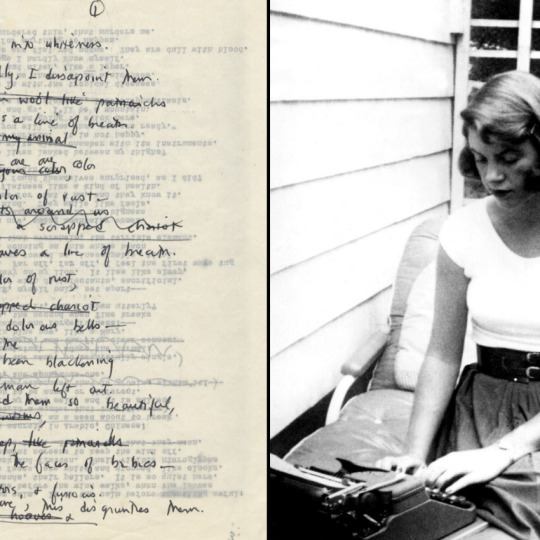

I still look for u in everyone I meet .ᐟ ᶻ 𝘇
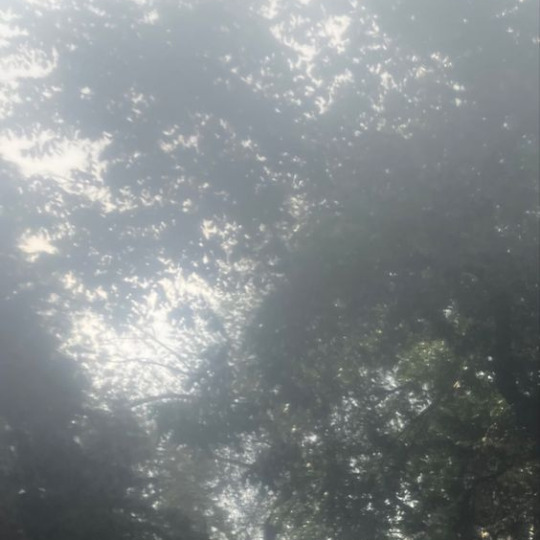
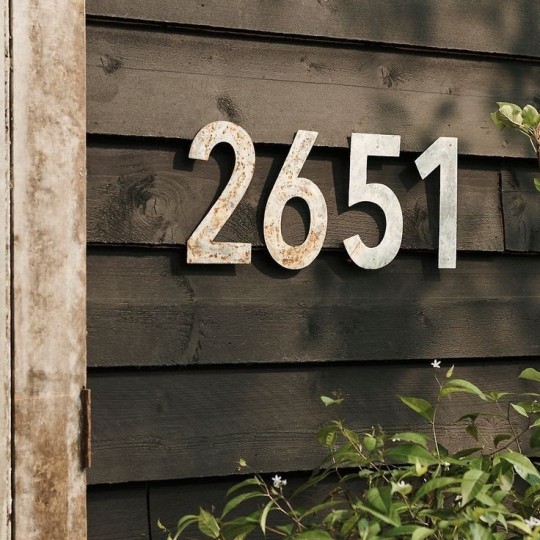
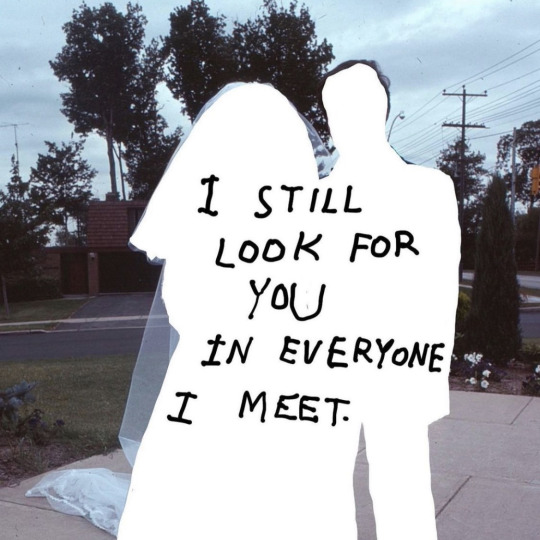
#☆ 、tokyus#ning yizhuo#ningning#ningning moodboard#twitter moodboard#y2k moodboard#vintage moodboard#aespa moodboard#karina moodboard#winter moodboard#giselle moodboard#messy moodboard#gg moodboard#twitter bios#twitter icons#twitter users#messy bios#gg layouts#twitter layouts#ggroup packs#gg icons#kpop moodboard#indie moodboard#indie icons
524 notes
·
View notes
Text

Tokyo, 1990 Yamashita Station, Tokyo, Japan. 日本 東京 東急電鉄世��谷線 山下駅 Photography by Michitaka Kurata
#japan#tokyo#setagaya line#tokyu#yamashita station#gotokuji#railway#platform#retro#photography#black and white photo#b&w#film#35mm#35mm film#fujifilm#nikon#1990#日本#東京#東急電鉄#世田谷線#山下駅#豪徳寺#ホームにて#都市風景#���黒写真#白黒フィルム#モノクロフィルム#モノクロネガフィルム
156 notes
·
View notes
Text


꧁★꧂
#shibuya tokyu toyoko ten#theme park#amusement park#anpanman#thomas the tank engine#hello kitty#sanrio#cute#kawaii#jungle gym#ship#pirate ship#colorful#rainbow#shibuya#tokyo#japan#flickr#oldweb#old web#2008
214 notes
·
View notes
Text
Shibuya, Tokyo, Japan. 🏬

#渋谷スクランブル交差点#City Lights#Nightlife#Street Scene#Night Lights#Disney#Tokyu#Department Store#Shibuya Crossing#Shopping Mall#Shibuya#Tokyo#Japan
79 notes
·
View notes
Text








No.462 Yokohama 8 views
golden week is crowding
Yokohama minatomirai railway company Kodomonokuni line in Yokohama city
*Kodomonokuni is natural-park in Yokohama city.Many family aim to go to it.
Archive;series 8 views No.460~
No.462 横浜八景
ゴールデンウィーク-横浜高速鉄道こどもの国線
アーカイブ:八景シリーズ No.460~
#japan#kanagawa#kanagawa prefecture#yokohama#tokyu#yokohama minatomirai railcompany#kodomonokuni#series 8 views#golden week#横浜#長津田#恩田#こどもの国#横浜高速鉄道#こどもの国線#東急7000系#鉄道#八景シリーズ#ゴールデンウイーク
17 notes
·
View notes
Text
pov a huge twewy/ntwewy nerd visits shibuya part 2
ramen town baby!!! yeah i was not about to climb that whole hill even though it really wasn’t that steep. dogenzaka beloved
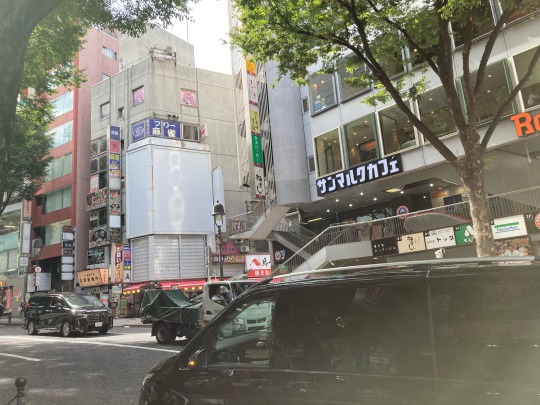
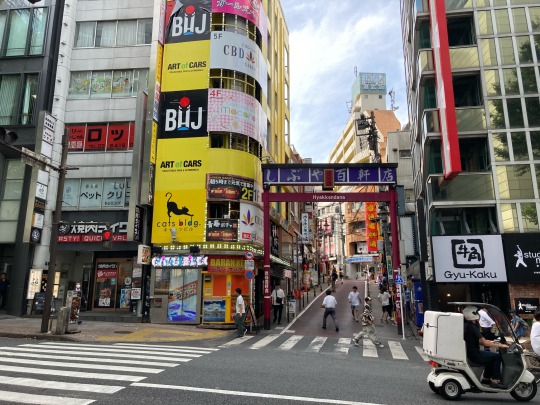
you only visit this place once in the main game but there are so so many things i could say about it. man the neku-josh-sho week 2 dynamic was the wildest and funniest thing in the world
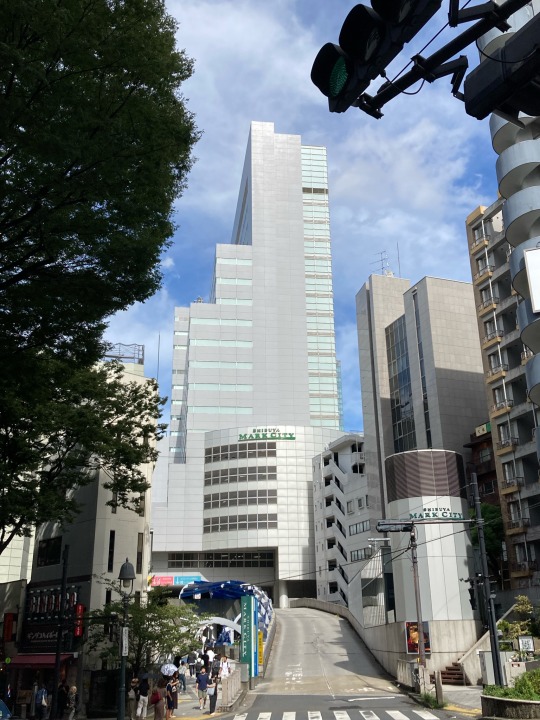
spain hill (from above) (idk uhh what’s iconic about here?) (i didn’t trip on any haunted step that much i know)

the vibes of this place… not accessible until so late in the game (in both games) but so good both times. like the story beats that happened here were always excellent. i always loved being at shibuya stream in ntwewy it was beyond surreal stepping out of the station and just actually being here irl


le susukichi boss fight (and some more cool puzzles)

shibuya hikarie! not much to say here but the food you find here in ntwewy looked so good man i need to actually eat more while here
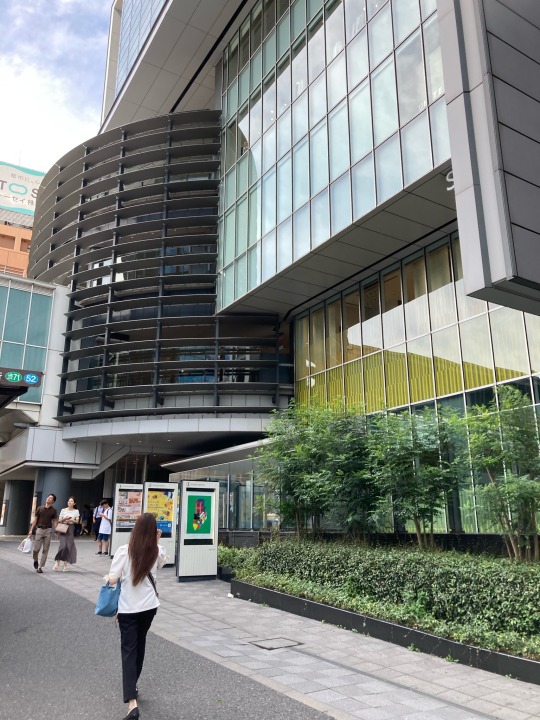
there are a few more actually oops! part 3 momentarily
#peach rambles#twewy#the world ends with you#neo the world ends with you#ntwewy#neo twewy#subaseka tag#mine: twewy#yeah sorry og twewy but ntwewy was a much stronger representation of what this town looks like#the twewy map was so confusing honestly#the 3D really helps in this case#only things i still could not instinctually find were o-east and udagawa#i didn’t find cat street but i think i would’ve if i had kept going i just didn’t feel like it#i mean we made it to tokyu plaza and takeshita street the other day but i wasn’t paying attention to the route we were taking#maybe we took part of cat street idk#i’m just thinking about the first time ya visit cat street in twewy and that fake mission lol#y’know it didn’t feel like it took me that long to get across all the corners of town#sure it was far away but like#y’know if you were walking and dealing with huge crowds and also trying not to be rude yeah it would take you wayyy more than fifteen min#but like neku was a ghost he didn’t have to worry about other people or his own physical stamina right#i feel like fifteen minutes was a doable challenge maybe?#if he’s running and has no physical drawbacks and also knows where he’s going already
66 notes
·
View notes
Photo




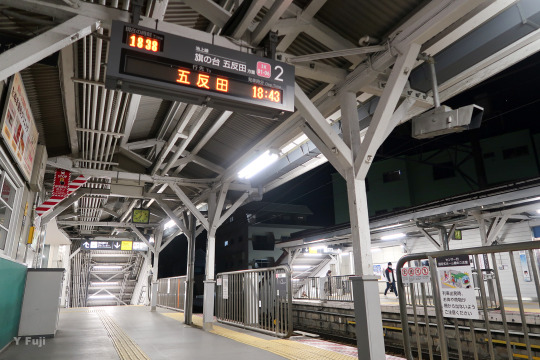
2019.2.2 Senzokuike Station 東急電鉄 池上線 洗足池駅
#japanphotography#Japanphoto#japanrailway#railway#trainphotography#station#鉄道#駅めぐり#tokyu#東急電鉄#池上線#洗足池駅#東京の駅
47 notes
·
View notes
Text
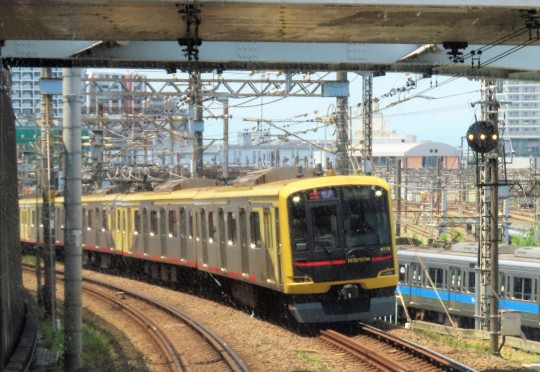
Tokyu set on the Sotetsu Line returning to Tokyo. Odakyu set heading to Shinjuku.
3 notes
·
View notes
Text
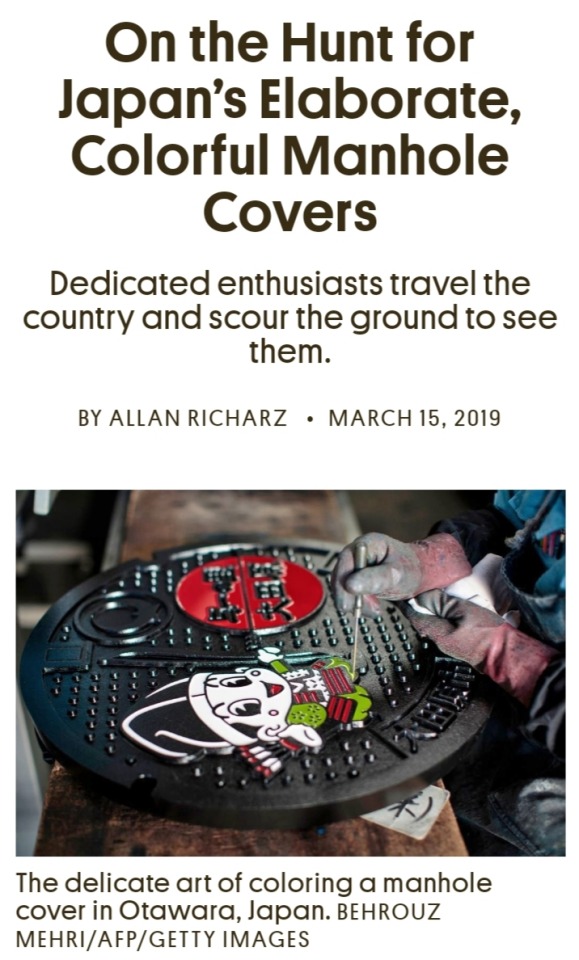
In Japan’s glittering cities, all hustle and light, they can be easy to miss.
With all that sensory assault, who thinks to look down and take notice of something as mundane as a manhole cover? But these are no ordinary bits of civic infrastructure.
In Japan, many manhole covers are works of urban art—elaborate, curious, distinctive, even colorful.
They have become a tourist destination unto themselves and attract a legion of dedicated manhole enthusiasts who travel the country to visit some of the thousands of unique designs.
Japan’s decorated manhole covers—broadly encompassing storm drain, domestic water supply, electrical and other utility access covers—initially took shape as a public relations campaign for sewers.
Beginning in the 1950s, the cast plates featured simple geometric patterns, such as the “Tokyo” and “Nagoya” designs.
Japanese civil servant Yasutake Kameda conceived of the intricate, artistic versions in 1985 to help warm a skeptical rural population to the idea of the costly but necessary modernization of the country’s sewer system.
From these humble and practical beginnings, manhole covers have become a cultural phenomenon.

Typically, “local manholes” or “design manholes” feature elements special to a particular location: a town emblem, landmark, event, or official bird or flower.
For instance, Takasaki, 60 miles northwest of Tokyo in mountainous Gunma Prefecture, has manhole covers that commemorate the city’s popular summer fireworks festival.
Local mascots (known as yurukyara, such as Fukaya City’s adorable rabbit-deer Fukkachan) and cartoon characters also appear.
In Tokyo’s Tama ward, home of the Sanrio Puroland amusement park, one can find covers featuring the ever-popular Hello Kitty.
Local sports franchises are also represented near the teams’ home arenas and stadiums—such as the well-known colorful depiction of the logo of the Hiroshima Carp baseball team.
While there is some logic to the placement of the covers, particularly those graced with color—usually near a landmark, theme park, or stadium—others appear to have been placed without rhyme or reason.
Indeed, it is not unusual to walk down an otherwise unremarkable side street and spot a special one underfoot.
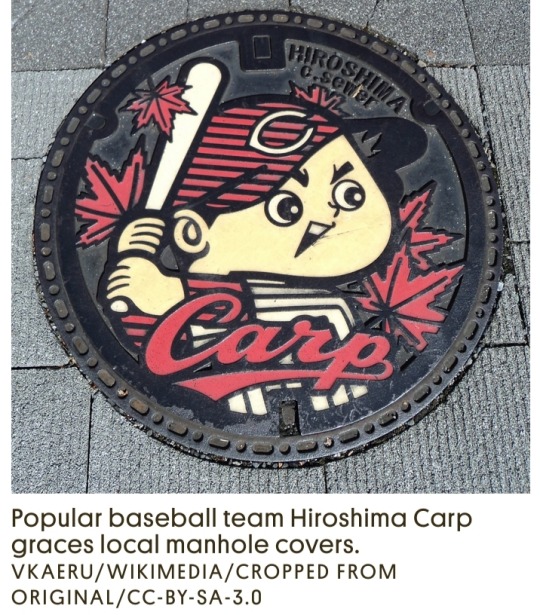
The ornate manhole covers are initially carved from aluminum, which is used to make sand molds for casting.
The majority of the designs are selected by local municipalities, in conjunction with manufacturers.
In most cases, the design is just imprinted in the cover, but in some cases, the covers get another touch—colored resins flooded into voids like enamel on jewelry.
Today, an estimated 95 percent of Japan’s 1,718 municipalities across all 47 prefectures now host their own unique covers.
In Osaka, approximately 10 percent of the city’s 180,000 manhole covers feature ornate designs, of which roughly 1,900 get the color treatment.
Typically, a designed manhole cover, which weighs more than 80 pounds, excluding the frame, costs approximately $585—a five percent premium over the cost of a plain cover.
The color, however, is applied carefully by hand and nearly doubles the price of a manhole to more than $900.
Such is the popularity of these little urban treasures that they have a devout, organized following.
There is the industry-led Japan Ground Manhole Association and the fan-based Japanese Society of Manhole Covers, whose website features thousands of photographs submitted by users across Japan, who have snapped everything from large sewer covers to tiny local utility access panels.

“Manholers,” as they’re known, may travel to distant areas of the country just to photograph covers or collect pencil rubbings known as takuhon.
Trading cards featuring manhole designs are also popular collectors’ items and can command steep prices in online auctions.
One prominent fan is Kei Takebuchi, a popular Tokyo-based singer-songwriter.
Takebuchi traces her fascination with them to the covers of Nagoya, which feature a charming cartoon water strider insect, while she was on tour in 2015.
Since then, she has regularly tweeted photos of manhole covers to her nearly 200,000 followers on social media.
“Every manhole cover design has [a meaning] … it tells me that we can create art with almost anything,” she says, in an interview for this story.
Like many places, Japan is full of people with unusual hobbies or obsessions, but love for the country’s manhole covers has gone mainstream:
a “manhole festival” was held near a major train station in Tokyo last month, featuring trading cards, baked goods, and replica covers from around the country.
Retailer Tokyu Hands ran an extended campaign at its central Shinjuku location, with a range of manhole cover–related goods for sale.

The affinity for manhole covers also seems to tap in to Japan’s fondness for hobbies that involve lots of domestic travel.
Stamp rallies—featuring rubber stamps at train stations and other landmarks—encourage hobbyists to travel to overlooked or lesser-visited locales to add one more stamp to their collections.
“Rail-fans” similarly scour the country to document or experience a rare train carriage, an unusual station melody, or other rail-related minutia.
It is the same for manholers, with the occasionally far-flung or seemingly random placement of coveted covers—and directions of varying accuracy—adding to the sense of a scavenger hunt.
Indeed, Takebuchi recounts once spending three hours on a bitterly cold day in Kawagoe City in Saitama Prefecture to snap a photo of a particular manhole cover, beautifully designed with an images of Toki no Kane, a historic bell tower.
Similar stories are common currency in manholing circles.
Easy to overlook, but curious and rewarding, Japan’s unique manhole covers are a charming reminder that the mundane can be exciting and that you should never forget to look down.

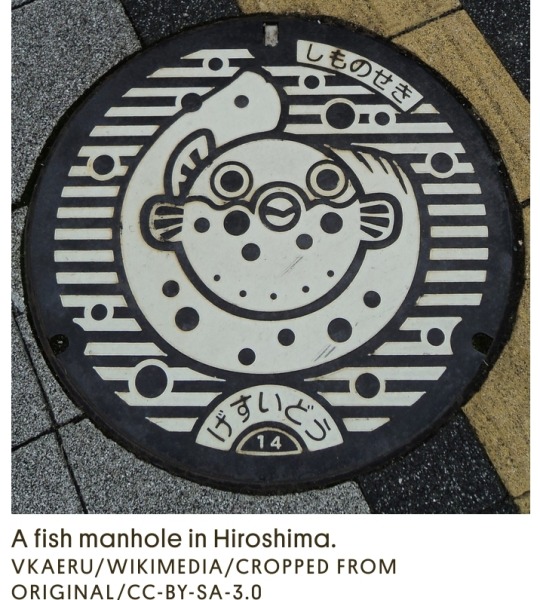

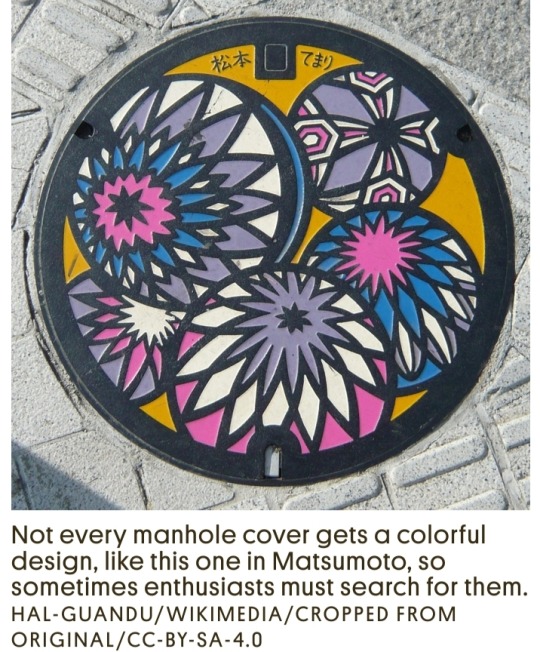

#Japan#manhole covers#Yasutake Kamed#local manholes#design manholes#Japan Ground Manhole Association#Japanese Society of Manhole Covers#manholers#Kei Takebuchi#manhole festival#Tokyu Hands
9 notes
·
View notes
Text
1st January new year Shinjuku, Omotesando walking tour!
1st January Happy New Year Shinjuku, Omotesando walking tour! Hi I’m Nobu, I like traveling overseas and in Japan, visited 25 countries! I’m a National Government Licensed Guide Interpreter of English for 8 years. For the people who are interested in and planning trip to Japan ,I show you hidden local information which you have never seen and heard of through books and ordinary site! You will…

View On WordPress
#Godzilla#Golden Gai#Hanazono shrine#Omoide yokocho#omotesando#shinjuku#sunny hills#Tokyo travel tips#Tokyu plaza
4 notes
·
View notes
Photo
Join the We Love Japan Community!
https://www.tumblr.com/communities/we-love-japan
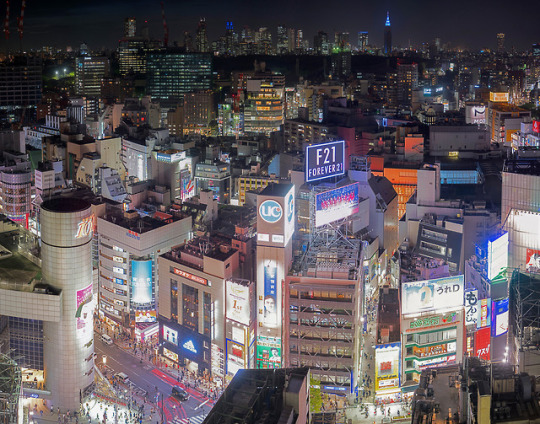
Shibuya - Tokyo, Japan
#Shibuya#Tokyo#Japan#night#neon#view#city#cityscape#buildings#skyscrapers#Shinjuku#skyline#Shibuya Excel Hotel Tokyu#nikon#d5500#渋谷#東京#日本#新宿#渋谷エクセルホテル東急
27K notes
·
View notes
Text
Discovering the beauty of Japan. The Perfect Blend of Old & New.
#渋谷スクランブル交差点#City Lights#Rain#Street Scene#Traffic Lights#Shibuya Crossing#Shopping#Tokyu#Department Store#Porcelain#Figurine#Decorative Plates#Shopping Mall#Nightlife#Night Lights#Shibuya#Tokyo#Japan
5 notes
·
View notes
Text
・推し活ショップ PanchaPanchaさん
・東急歌舞伎町タワー
・新宿駅
行ってきました!
歌舞伎町タワー美しかったなぁ😌✨
・Oshikatsu shop PanchaPancha
・Tokyu Kabukicho tower
・Shinjyuku station
I went there!
Kabukicho Tower was beautiful😌✨
使用音声…VOICEVOX:小夜/SAYO
BGM…夢の中へ…[Into the Dream…]
#vlog#japanese vlog#musician vlog#musicianlife#japan#tokyo#tokyo walk#city walk#shin-okubo#shinjyuku#tokyu kabukicho tower#kabukicho tower#pancha pancha#ミュージシャンの��常#東京#東京散歩#街歩き#新大久保#新宿#東急歌舞伎町タワー#musician#composer#透明廻廊メゾン#tkmaison#東京遠征#short movie#Spotify
1 note
·
View note




